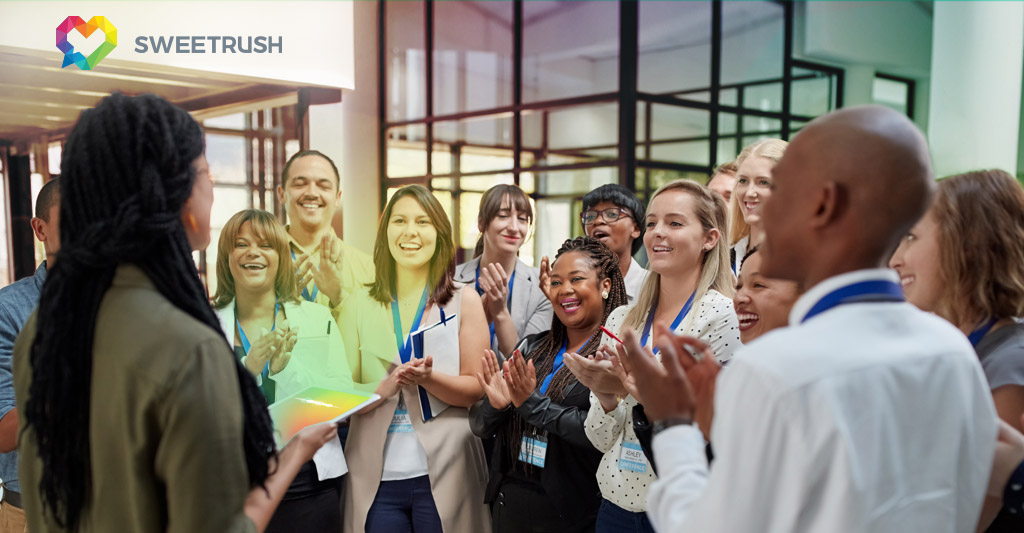Soft skills training for employees isn’t what it used to be—and that’s a good thing. Get ready to play as you learn with gamification, virtual reality, and more.
As the pace of change propels us ever forward into the Fourth Industrial Revolution, technical skills are quickly being made obsolete by newer ones. It’s nice to know, however, that some skills will never be obsolete. Soft skills—such as communication and creativity—will always be crucial in the workplace, and vital to one’s professional success. And in today’s knowledge economy, soft skills training is of increasing importance and here at SweetRush, we’re seeing growing demand.
A 2018 LinkedIn Learning trends survey revealed that 65% of executives, 66% of people managers, and 74% of talent developers agree that leadership training is the most important kind of corporate soft skills training. Most of them also agree that communication and collaboration are essential soft skills training topics for employees. And several surveys as of late cite empathy as a key “skill” to develop in workers.
But how do you effectively and efficiently teach people to communicate better? Or increase their empathy? Or improve their decision-making? Or become more adaptable?
Thankfully, emerging technologies (ET) not only offer many solutions for soft skills training, they’re revolutionizing the way we think about and deliver employee learning and development—for the (much) better. All the modalities within the ET umbrella—virtual reality (VR), augmented reality (AR), and simulations among them—can contribute to improved methods of teaching soft skills, and some are more apt for specific skill training than others. And some, like gamification, are successful in teaching multiple soft skills.
In “Soft Skills Training: Trends in Digital Learning and Emerging Technologies,” author Danielle Hart, SweetRush’s Director of Marketing, references several soft skills learning programs developed by SweetRush in collaboration with our clients, such as, “…using gamification to give learners a time constraint and approach a situation by thinking on their feet. This approach mimics the real world, where employees need to react quickly during conversations and customer interactions.”
Many ET modalities can also help to develop empathy in learners. Virtual reality is impactful because “it is as close to being in the real world, having a firsthand experience, as we can possibly create,” says SweetRush Senior Learning Strategist Mary Gannon, PhD. Online simulations and avatar characters are highly effectual as well. Add augmented reality to the list, too, as it holds endless creative applications. Keep in mind, though, that empathy is but one of many skills these modalities can help inspire, reinforce, and expand on.
That platforms normally associated with entertainment and fun can be used for developing soft skills—so valuable to both workplaces and career trajectories—is quite intriguing, as well as welcome, news. And with 86% of millennials1—millennials being nearly half of the workforce2—saying they’d remain with their employer for the long term if offered “career training and development,” it sounds like ET-driven soft skills training is a big win-win for organizations and employees alike.
DISCOVER MORE ABOUT ET IN L&D NOW BY READING SOFT SKILLS TRAINING: TRENDS IN DIGITAL LEARNING AND EMERGING TECHNOLOGIES




